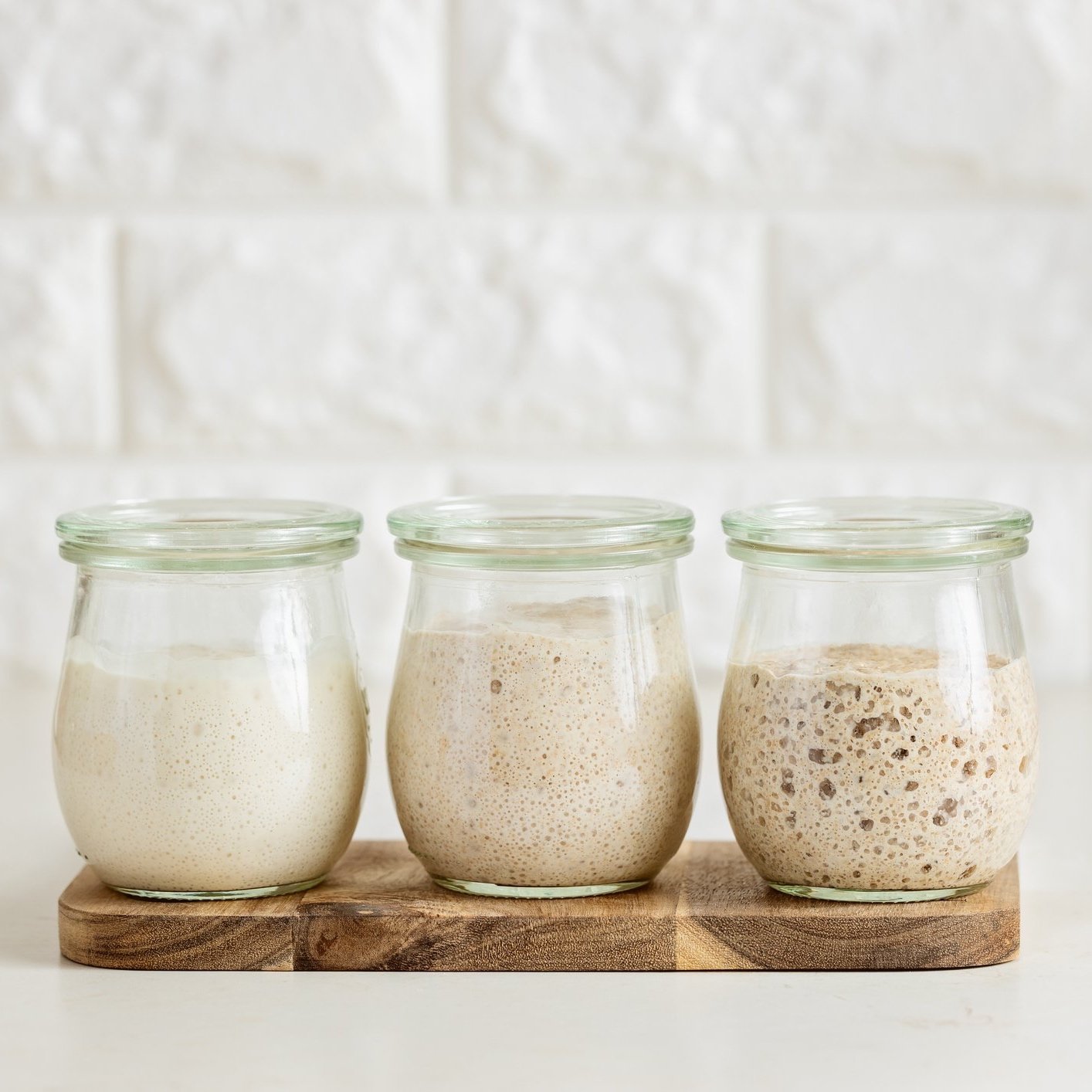Why Your Sourdough Isn’t Rising—and How to Fix It
Apr 18 | Written By Sabrina Huizar
You followed the recipe. You kneaded (or didn’t). You waited. You hoped. And now you’re staring at a loaf that’s flatter than a pancake. So… what went wrong?
First off: you’re not alone. Every sourdough baker—every single one—has faced a sad, dense loaf at some point. The good news? There’s always a reason, and there’s always a fix.
Let’s break down the most common culprits behind sluggish (or nonexistent) sourdough rise and how to get that beautiful lift next time.
1. Your Starter Isn’t Active Enough
Symptom: The dough barely rises, even after hours.
Fix: Check your starter’s activity. A healthy starter should double in size within 4–6 hours of feeding. If it’s sluggish, feed it a few times at room temperature before baking.
Bonus tip: Try feeding it with whole wheat or rye to boost activity. And don’t forget to discard. Overfed, underfed, or neglected starters can get lazy.
2. Your Dough’s Too Cold
Symptom: The dough is rising, but so slowly.
Fix: Sourdough loves warmth. If your kitchen is chilly (below 70°F / 21°C), the rise will slow way down. Try putting the dough in a turned-off oven with the light on, or near a warm appliance. Or embrace the slow rise and let it go overnight.
3. You Didn’t Ferment Long Enough (or You Overdid It)
Symptom: The dough feels tight and underproofed—or collapsed and sticky.
Fix: Timing matters. Underproofed dough doesn’t have enough gas to rise well; overproofed dough can deflate and turn gummy. The sweet spot is when the dough is slightly domed, jiggly, and puffed—usually 4–6 hours at warm room temp, or longer if it’s cooler.
Pro move: Use the “poke test”—gently press a floured finger into the dough. If the dent springs back slowly, it’s ready. If it springs back fast, it needs more time. If it doesn’t spring back at all—it may be overproofed.
4. Your Flour Might Be Too Weak
Symptom: The dough tears easily, or can’t hold shape.
Fix: Try using bread flour instead of all-purpose. Bread flour has more protein (gluten), which helps trap gas and gives better structure. If you’re using whole wheat or rye, blend it with a higher-protein flour for strength.
5. You Didn’t Develop the Gluten Enough
Symptom: Flat loaf with no oven spring.
Fix: Gluten gives sourdough its structure. Whether you knead, stretch and fold, or slap and fold, you need some method to build strength. Aim for a dough that feels elastic and smooth before bulk fermentation.
Shortcut: Even just a few stretch-and-fold sessions over the first hour can make a huge difference.
6. Your Shaping Needs Work
Symptom: Dough spreads sideways instead of rising up.
Fix: Good shaping builds surface tension, which helps the loaf hold its shape. Try practicing the “boule” or “batard” shape, and don’t be afraid to tighten the dough a bit more than feels natural.
Also: Let shaped dough rest seam-side up in the banneton or bowl—it’ll flip seam-side down for baking.
7. Your Oven Setup Is Letting You Down
Symptom: The dough looked promising—but flattens in the oven.
Fix: You need steam and high heat for a good rise. Bake in a preheated Dutch oven, or use a baking stone with a tray of hot water for steam. Don’t skip the preheat—450°F (230°C) minimum.
Bonus: Did You Use Salt?
It sounds obvious, but salt strengthens gluten and helps control fermentation. Forgetting salt can lead to a sticky, unruly dough that refuses to rise properly.
The Takeaway
Flat sourdough isn’t a failure, it’s a clue. Each loaf teaches you something, even the dense ones. And once you get that lift, that crackle, that open crumb? You’ll know it was worth every flop along the way.
Stay tuned—and stay cultured.
French Parisian Sourdough Starter Culture
from $15.00
Classic Gluten Free Sourdough Starter Culture
from $15.00


